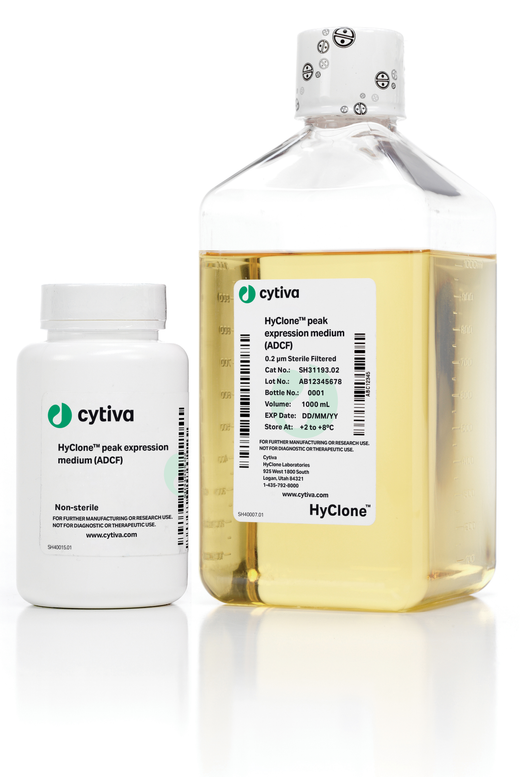出展情報
2023年11月28日(火)~12月1日(金)、名古屋国際会議場で開催される第36回日本動物細胞工学会 2023年度国際大会出展に出展いたします。
会 期
2023年11月28日(火)~12月1日(金)
※展示会は11月29日(水)~12月1日(金)
場 所
名古屋国際会議場(愛知県名古屋市)
- 〒456-0036
名古屋市熱田区熱田西町1番1号 - Google™マップで見る
見どころ
Cytivaではシングルユース培養槽からHyClone™(ハイクローン)培地などの消耗品に至る幅広い製品群を展開し、細胞培養に関わるノウハウを蓄積しております。
本年はシングルユースバイオリアクターの新製品のご案内をはじめ、細胞の増殖や産物の品質にも影響を与える、培地原料内のトレースエレメントをコントロールするサービスに関する情報をお届けいたします。
また、⾼いスケーラビリティを保有しかつ宿主細胞DNAの封⼊の低減により安全性が向上した次世代AAV製造技術、ELEVECTAに関するポスター発表も実施いたします。
ぜひ会場にお越しの際はCytivaブースならびにセミナーにお立ちりください。
※新しい情報は随時本ページをアップデートしてまいります。会期までぜひご確認ください。
テクニカルセミナー
日 時
2023年11月29日(水)15:10~15:40
タイトル/演 者
Targeted cell culture media manufacturing
Christopher Woolstenhulme, Ph.D., Cytiva
Abstract
Understanding and controlling raw material impurities is essential for modern cell culture media manufacturing. Cytiva’s raw material characterization program uses cutting-edge testing and state-of-the-art data analytics to understand the types and quantities of impurities present in raw materials. This information has helped Cytiva to build the unique capability to predict and manufacture cell culture media consistently within a specification range defined by customers without modifying or changing the formulation. Named "Targeted Cell Culture Media Manufacturing™", this capability allowed Cytiva to successfully manufacture over 40 batches of high-quality media within specification guidelines with no changes to customer formulations.
タイトル/演 者
Introducing Xcellerex™ X-platform bioreactors
Carrie Miller, Cytiva
Abstract
We designed Xcellerex™ X-platform bioreactors to meet your process needs today and in the future. Whether in pilot or cGMP facilities, the modular and application-based approach improves cell culture productivity.
In this seminar, we will explain the overview and several features of Xcellerex™ X-platform bioreactors.
ポスター
- Precision cell culture media manufacturing with trace metal and amino acid control
Variation in trace metal and amino acid content in cell culture media can have profound impact on cell culture growth, cell line productivity, and large molecule quality attributes. Of particular concern to drug manufacturers is the impact of uncontrolled metal or amino acid content on drug pharmokinetics, pharmacodynamics, and immunogenicity of large-molecule drug products. To mitigate these issues, an effective control strategy is required, including a process to characterize and track raw material impurities throughout the manufacturing process and store this data for future use. Once collected, this raw material data is used to understand sources of lot-to-lot variation and the impact of variation on cell growth, drug-product titer, and changes in drug-product quality attributes. Cytiva has collected a body of raw material data to predict cell culture media characteristics prior to manufacturing and select component lots to modulate the levels of critical analytes to suit customer targets, referred to as our Targeted Cell Culture Media Manufacturing™ program. This control strategy can be implemented at different levels throughout the cell culture media manufacturing process, ranging from trending and raw material limit controls to extensive lot selection based on customer targets. The result of this control strategy is a cell culture media product with increased lot-to-lot uniformity resulting in a highly characterized, highly controlled media to meet customer drug product targets. - Polypropylene glycol and high molecular weight impurity detection in poloxamer 188
Polypropylene glycol (PPG) was recently identified as an impurity in poloxamer 188 (P188), highlighting a need for advanced analytical testing. During P188 synthesis, side products can be produced such as high molecular weight poloxamer species (HMW) or PPG and have been shown reduce the growth of specific CHO cultures. Indeed, 2000 molecular weight PPG (PPG) concentrations as low as 0.125% w/w decreased the day 6 viable cell densities (VCD) and integral viable cell densities (IVCD) when compared with the biological grade P188 (P188 Bio) control cultures. Yet, PPG did not affect cell viability at concentrations below 1% w/w. When P407 was used to simulate a HMW impurity, as little at 1% w/w was sufficient to decrease VCD and viabilities in baffled flask cultures. Since analytical tests provide increased sensitivity to detect poloxamer impurities, Cytiva developed a reversed-phase LC/MS test capable of screening for HMW or PPG in the same test. PPG and P407 were diluted to 10 or 1mg/ml in deionized water and analyzed through reversed-phase liquid chromatography and mass spectrometry (LC/MS) either separate or in combination with P188 Bio. Using this approach, the primary P188 peak occurred between retention times from 10-18 minutes and P407 and PPG samples retention times were 18-23 minutes. Taken together, these data demonstrate the feasibility to identify HMW or PPG impurities using a single analytical test and can be used in tandem with validated cell culture tests to screen for biologically relevant P188 impurities. - High-titer rAAV production in bioreactors using ELEVECTA producer cell lines
In recent years, the number of gene therapy products in the biopharma clinical pipeline have increased, as well as the need for scalable manufacturing processes for viral vector production. Recombinant adeno-associated virus (rAAV) is widely used as a viral vector for gene therapy; however, delivering the required amounts of AAV vector particles is still a challenge, especially with typical triple-transfection methods.
ELEVECTA™ producer cell lines are a stable, helper virus-free rAAV production technology. They consist of mammalian suspension cells that have stably integrated all components necessary to produce AAV — adenovirus helper functions, AAV replicase, AAV capsid, and the gene of interest (GOI) flanked with the AAV ITRs. Production in this system is initiated by induction via doxycycline. Stable rAAV production using ELEVECTA producer cell lines has been demonstrated with different serotypes as well as different GOIs.
Here we describe upstream process development in 10, 50, and 200 L stirred-tank bioreactors using an ELEVECTA producer cell line. We also demonstrate how we optimized an AAV8-GFP proof-of-concept (PoC) producer single cell clone (SCC) in batch and perfusion modes. These results showed that ELEVECTA producer cell lines can deliver robust and scalable rAAV production throughout 10 to 200 L scale, and perfusion mode can improve both the quality and quantity of vector particles.
お問合せフォーム
※日本ポールの他事業部取扱い製品(例: 食品・飲料、半導体、化学/石油/ガス )はこちらより各事業部へお問い合わせください。


